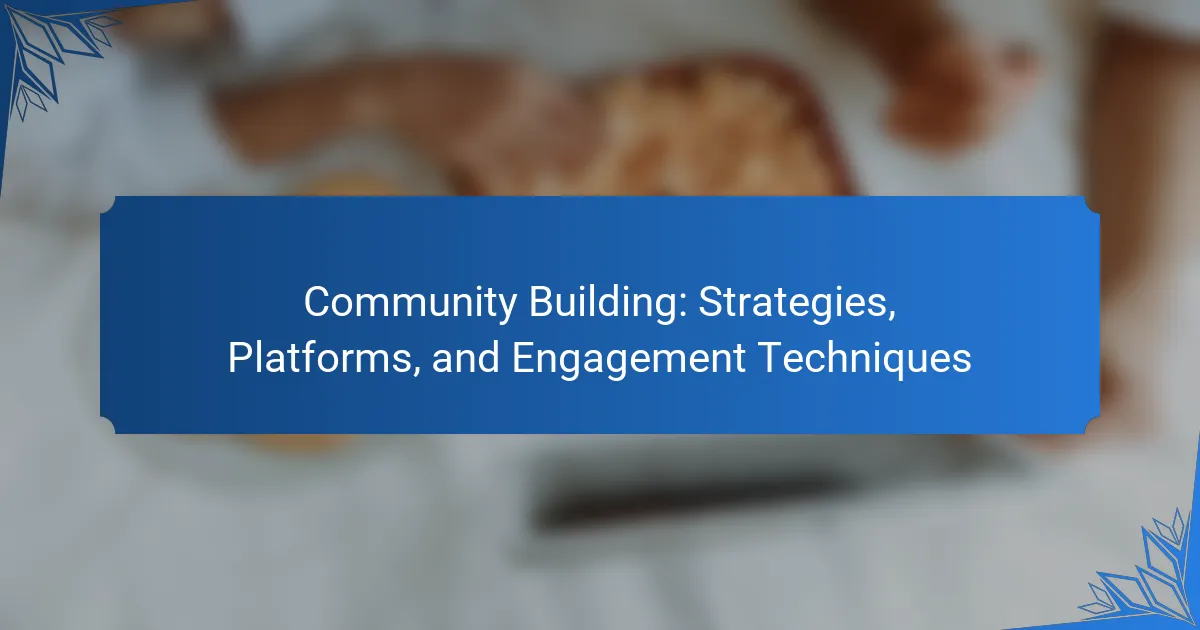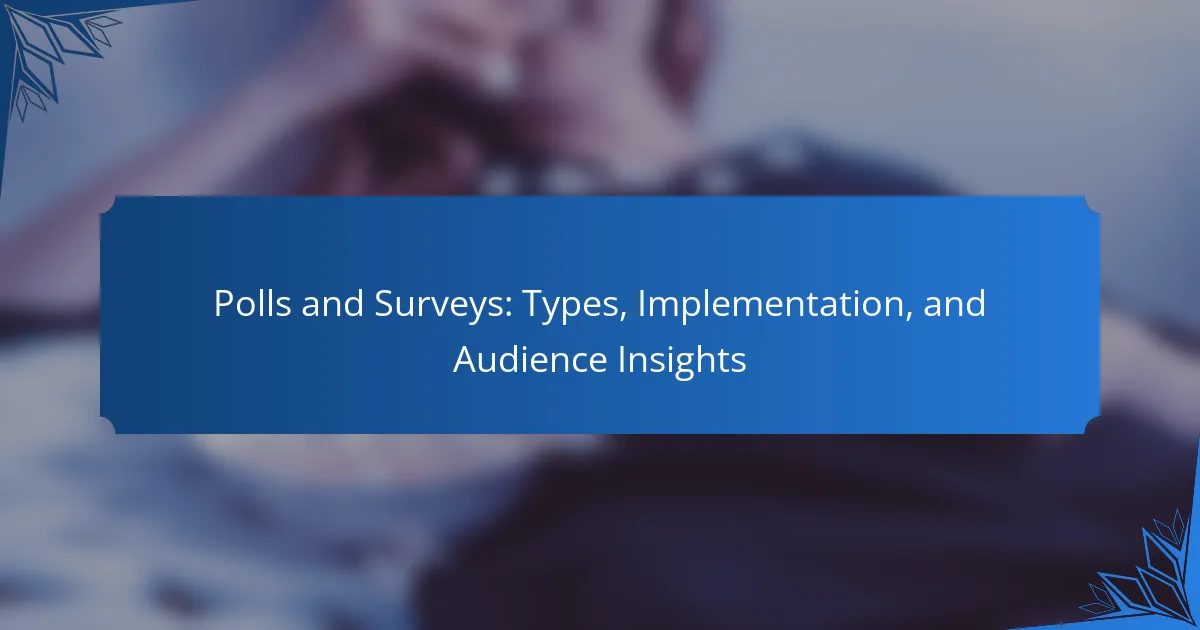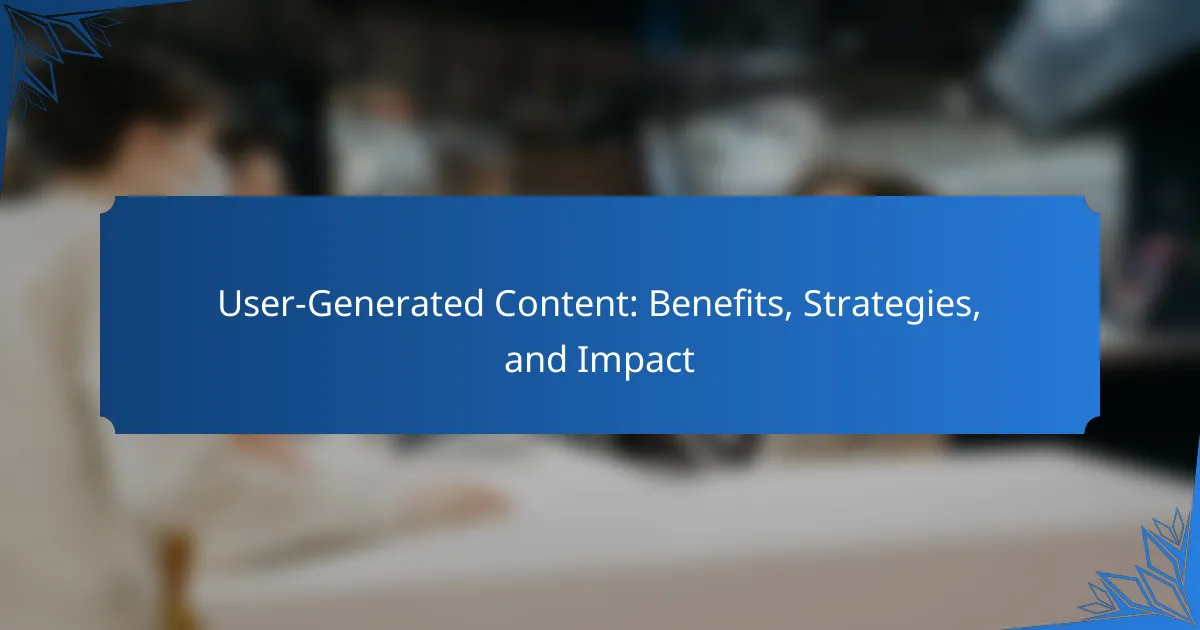Building a strong community requires intentional strategies that promote connection and engagement among members. By leveraging various platforms and employing effective engagement techniques, communities can create an environment where individuals feel valued and motivated to participate actively.
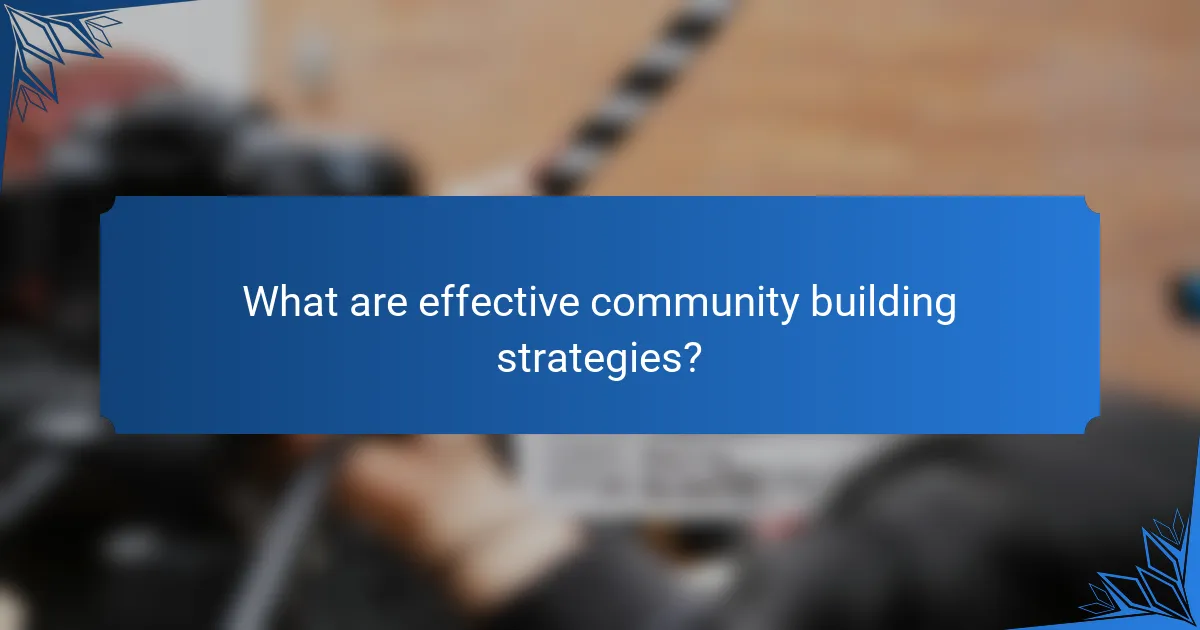
What are effective community building strategies?
Effective community building strategies focus on fostering connections and engagement among members. These strategies can include content creation, networking events, online discussions, social media interactions, and collaborative projects.
Content creation and sharing
Creating and sharing valuable content is crucial for community building. This can involve blog posts, videos, podcasts, or infographics that resonate with your audience’s interests and needs. Regularly publishing high-quality content encourages members to engage and share their thoughts.
Consider using a content calendar to plan and organize your posts. This helps maintain consistency and ensures a diverse range of topics that appeal to different community segments. Aim for a mix of educational, entertaining, and inspiring content.
Networking events and meetups
Networking events and meetups provide opportunities for community members to connect in person or virtually. These gatherings can range from casual coffee chats to structured conferences, allowing members to share experiences and build relationships.
When organizing events, consider the interests of your community. Use platforms like Eventbrite or Meetup to facilitate registration and promote your events. Aim for a mix of formats, such as workshops, panels, or informal networking sessions, to cater to various preferences.
Online forums and discussion groups
Online forums and discussion groups serve as platforms for members to engage in conversations and share insights. These can be hosted on dedicated websites, social media groups, or platforms like Discord or Slack.
Encourage participation by posing questions, sharing relevant articles, and fostering a welcoming environment. Establish guidelines to ensure respectful interactions and consider appointing moderators to maintain a positive atmosphere.
Social media engagement
Social media engagement is vital for community building, as it allows for real-time interaction and broadens your reach. Utilize platforms like Facebook, Twitter, Instagram, or LinkedIn to share updates, gather feedback, and encourage discussions.
To enhance engagement, post regularly and use interactive content such as polls, quizzes, or live Q&A sessions. Monitor analytics to understand which posts resonate most with your audience and adjust your strategy accordingly.
Collaborative projects
Collaborative projects encourage community members to work together towards a common goal, fostering a sense of belonging and teamwork. These projects can include joint initiatives, challenges, or creative endeavors that leverage the skills and interests of members.
When initiating a collaborative project, clearly define objectives and roles to ensure everyone understands their contributions. Use project management tools like Trello or Asana to facilitate coordination and track progress. Celebrate milestones to maintain motivation and engagement throughout the project.
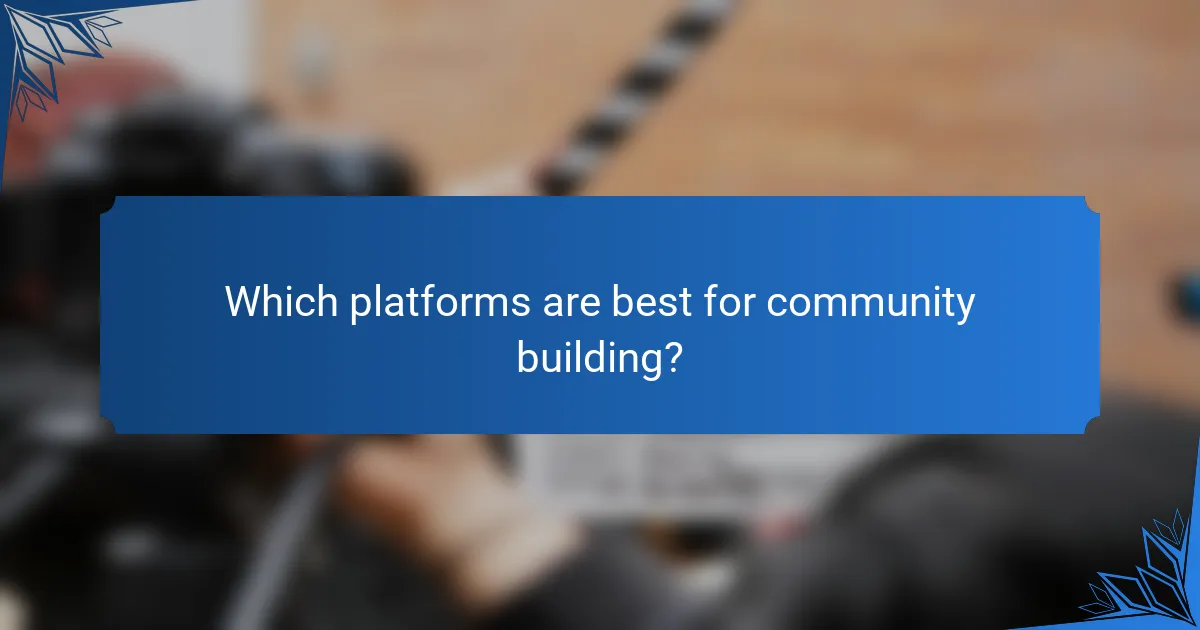
Which platforms are best for community building?
Effective community building can be achieved through various platforms, each offering unique features and user bases. Choosing the right platform depends on your community’s goals, demographics, and engagement style.
Facebook Groups
Facebook Groups are ideal for fostering community interaction due to their large user base and familiar interface. They allow members to post updates, share content, and engage in discussions, making it easy to build a sense of belonging.
When using Facebook Groups, consider setting clear guidelines to maintain a positive environment. Regularly engage with members through polls, questions, and live sessions to keep the community active.
Discord servers
Discord servers provide a dynamic space for real-time communication, especially popular among gaming and tech communities. They support text, voice, and video channels, allowing for diverse interaction styles.
To maximize engagement on Discord, create dedicated channels for specific topics and encourage members to participate in voice chats or events. Be mindful of moderation to ensure a welcoming atmosphere.
Reddit communities
Reddit communities, or subreddits, are excellent for niche interests and discussions. They allow users to post content and comment, fostering a collaborative environment where members can share knowledge and experiences.
When building a Reddit community, focus on creating engaging content and encourage discussions through AMAs (Ask Me Anything) or themed posts. Be aware of Reddit’s rules and culture to avoid backlash.
Slack channels
Slack channels are commonly used for professional communities, providing a platform for collaboration and networking. They enable organized discussions through channels dedicated to specific topics or projects.
To effectively use Slack for community building, encourage members to share resources and updates. Regularly host virtual meetups or discussions to strengthen connections among members.
LinkedIn groups
LinkedIn groups are tailored for professional networking and industry-specific discussions. They allow members to connect, share insights, and post job opportunities, making them suitable for career-oriented communities.
When managing a LinkedIn group, focus on providing valuable content and facilitating discussions that enhance professional growth. Regularly engage with members by sharing industry news or hosting webinars to maintain interest.
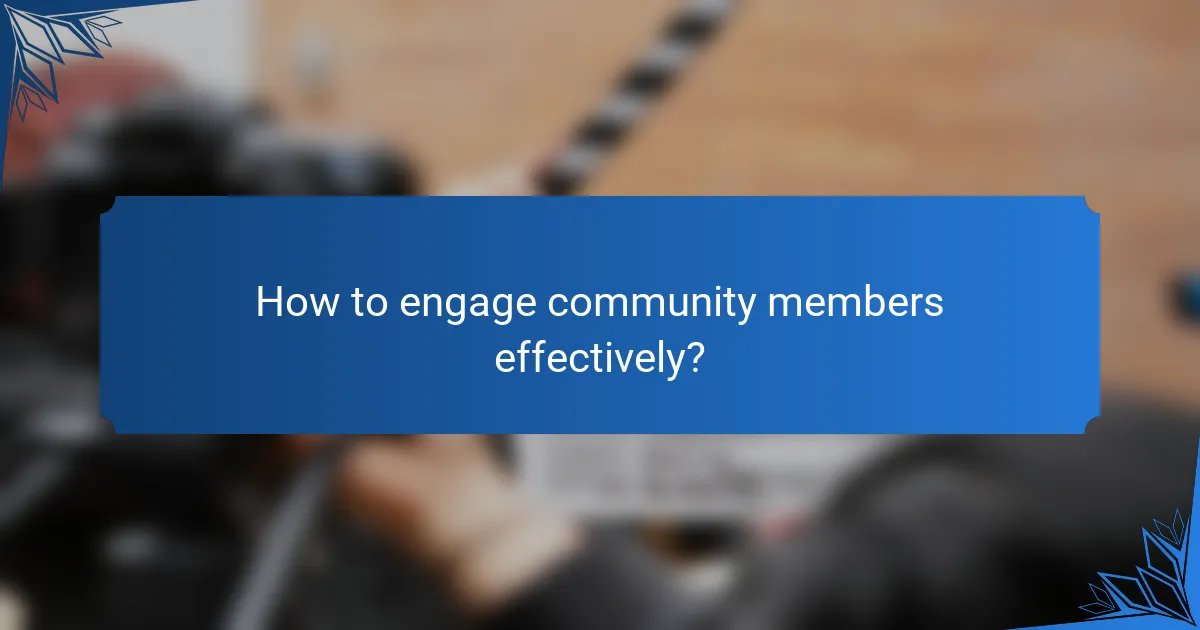
How to engage community members effectively?
Engaging community members effectively involves consistent communication, recognition, and opportunities for interaction. By implementing targeted strategies, communities can foster a sense of belonging and encourage active participation.
Regular updates and communication
Regular updates keep community members informed and connected. Utilize newsletters, social media posts, and community forums to share news, events, and relevant content. Aim for a consistent schedule, such as weekly or bi-weekly updates, to maintain engagement.
Encourage open lines of communication by responding promptly to inquiries and comments. This responsiveness builds trust and shows members that their input is valued.
Incentives and rewards
Offering incentives and rewards can significantly boost engagement. Consider implementing a points system where members earn rewards for participation, such as discounts, exclusive content, or recognition within the community.
Tailor incentives to your audience’s interests. For example, if your community focuses on fitness, rewards could include free classes or merchandise. This personalization enhances motivation and encourages ongoing involvement.
Feedback and surveys
Gathering feedback through surveys helps understand member needs and preferences. Regularly ask for input on community initiatives, events, and content to ensure alignment with member interests.
Keep surveys concise and easy to complete, ideally taking no more than a few minutes. Consider offering a small incentive for participation to increase response rates.
Interactive content
Interactive content, such as polls, quizzes, and live Q&A sessions, fosters engagement by encouraging active participation. These formats not only entertain but also provide valuable insights into member preferences.
Utilize platforms like social media or community forums to host interactive events. For instance, a monthly quiz related to community interests can stimulate discussion and enhance member connections.
Member spotlights
Highlighting individual members through spotlights can strengthen community bonds. Share stories, achievements, or contributions of members to recognize their involvement and inspire others.
Consider featuring a member of the month in newsletters or social media posts. This recognition not only boosts the featured member’s morale but also encourages others to engage more actively in hopes of being spotlighted.
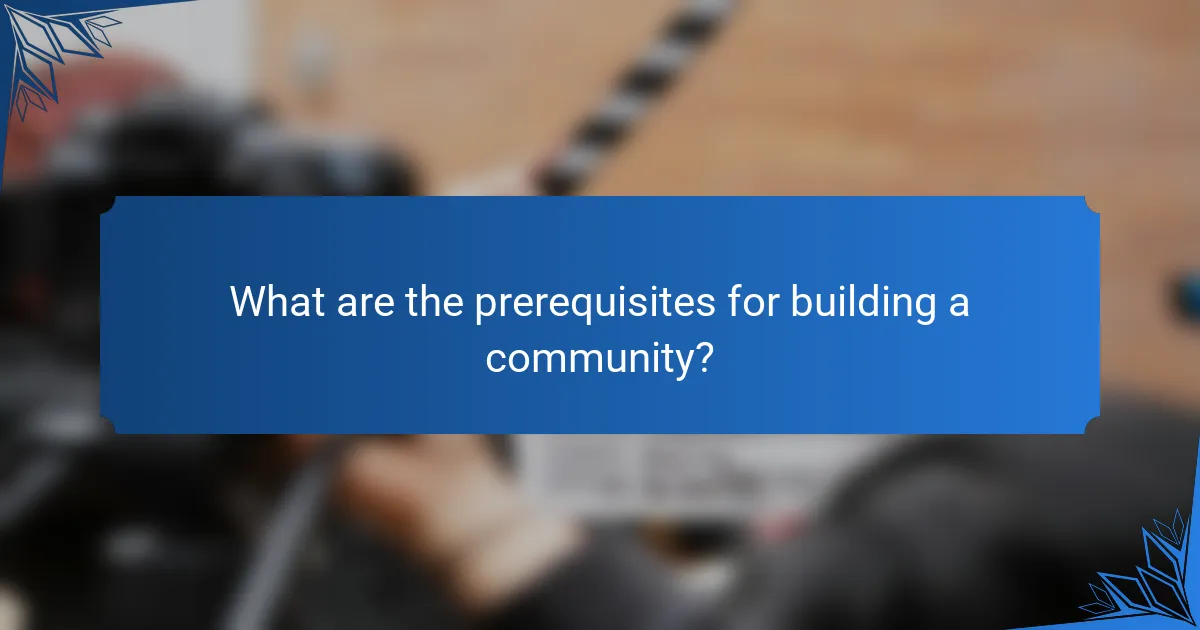
What are the prerequisites for building a community?
Building a community requires a clear understanding of its purpose, a defined target audience, and adequate resources. These prerequisites set the foundation for effective engagement and sustainable growth.
Clear purpose and goals
A clear purpose and specific goals are essential for community building. They guide the direction of the community and help members understand what they can achieve together. For example, a community focused on environmental sustainability might aim to reduce local waste by a certain percentage within a year.
Establishing measurable goals, such as increasing membership by a specific number or hosting regular events, can help track progress. Consider using the SMART criteria—Specific, Measurable, Achievable, Relevant, Time-bound—to formulate these objectives.
Target audience identification
Identifying the target audience is crucial for tailoring content and engagement strategies. Understanding who the community is for, including their interests, demographics, and needs, allows for more effective communication and connection. For instance, a tech community may focus on software developers, while a local gardening group may attract homeowners interested in sustainable practices.
Conduct surveys or utilize social media analytics to gather insights about potential members. This information can help refine your approach and ensure that the community resonates with its intended audience.
Resource allocation
Proper resource allocation is vital for sustaining community activities and engagement. This includes time, financial resources, and human capital. For example, if hosting events, budget for venue rental, materials, and promotional efforts to attract members.
Consider creating a resource plan that outlines what is needed for various activities, including volunteer roles, funding sources, and tools for communication. Regularly assess these resources to adapt to the community’s evolving needs and ensure continued engagement.
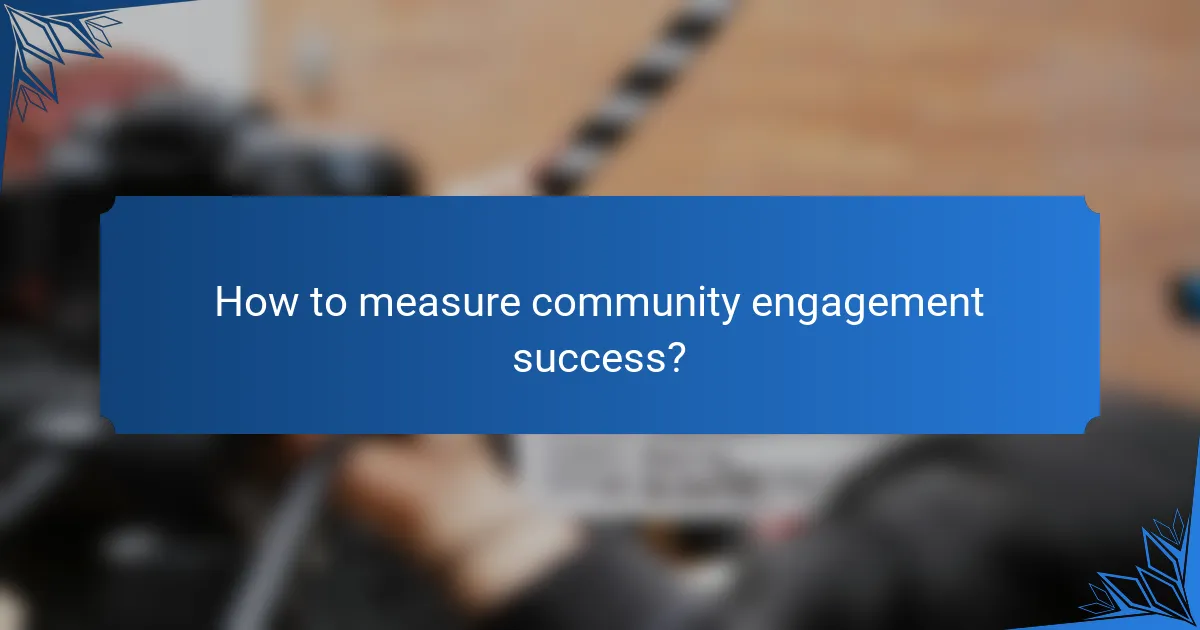
How to measure community engagement success?
Measuring community engagement success involves tracking specific metrics that reflect participation, interaction, and satisfaction within your community. Key indicators include member activity levels, feedback quality, and retention rates.
Key metrics for engagement
To effectively measure community engagement, focus on metrics such as active user counts, post interactions, and response rates. For instance, tracking the number of comments and likes on posts can provide insight into how engaged members are with the content.
Additionally, consider using surveys to gauge member satisfaction and gather qualitative feedback. This can help identify areas for improvement and enhance overall community experience.
Tools for measurement
Utilize analytics tools like Google Analytics, social media insights, or specialized community platforms to track engagement metrics. These tools can help you visualize data trends and understand user behavior over time.
For example, platforms like Discourse or Slack offer built-in analytics that can show member activity patterns, allowing you to make informed decisions about community management.
Interpreting results
Interpreting engagement metrics requires context. A spike in activity might indicate a successful campaign or event, while a drop could signal disengagement. Look for patterns over time rather than focusing solely on individual data points.
Consider benchmarking against similar communities to understand what constitutes successful engagement in your niche. This can help set realistic goals and expectations for your community’s growth.
Improving engagement
To enhance community engagement, focus on creating valuable content and fostering a welcoming environment. Encourage member participation through regular events, discussions, and feedback opportunities.
Be proactive in addressing member concerns and celebrating community achievements. This not only boosts morale but also strengthens the sense of belonging among members, leading to higher engagement levels.
